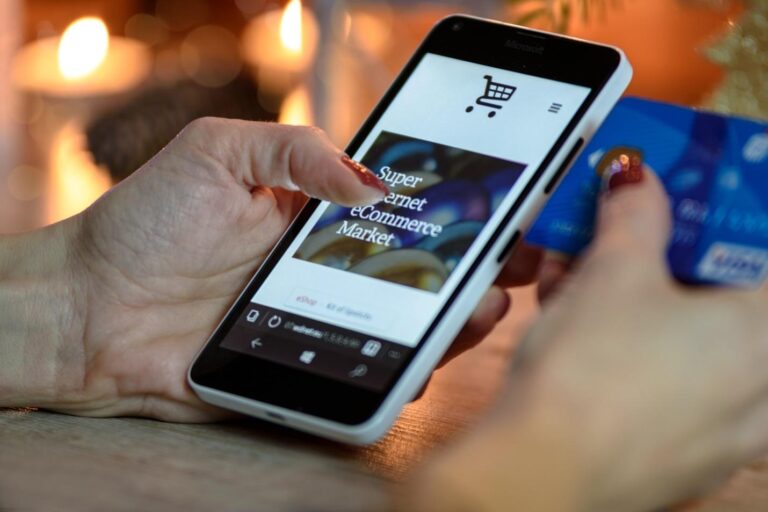Running an eCommerce website is not as easy as it was a decade ago. It’s mainly because of firm competition and rising customer expectations. Even though customers have seen so much in the eCommerce arena, it is still the most trending and profitable business idea of the millennium. You just need to hit that right spot.
However, it’s not easy to find that right spot either. For starters, eCommerce today is not just about selling stuff online, but more about offering the best user experience as per the current trends.
Just think this. When giants like Alibaba, Amazon, and Ikea are offering AI-based immersive shopping experiences, offering a mere online shopping cart to simply place orders is no more a competitive USP. I mean, just look at what Amazon has in its trunk for the contemporary eCommerce customers:
- A gigantic catalogue of a massive amount of products.
- A bundle like Amazon Prime (eCommerce, Music, Video streaming, same-day delivery, and much more).
- AI-based fully autonomous Amazon Go store.
- Prime Air for a drone –led deliveries in less than 30 minutes.
What makes eCommerce still an enticing business, even after giants like Amazon seem unbeatable? It’s the market size. It’s a massive market out there for new entrants and one can still make unprecedented profits through the right kind of strategies.
E-Marketer has forecasted the expected online sale to grow by over 15.1% in the US itself by the end of 2019. Experts have also found the right spots to hit for grabbing a share from this massive pie. You have to focus on social media marketing, operative mobile app strategies, and the use of data-driven policies and micro-personalization in digital marketing.
ECommerce is poised to become a $4.9 trillion market by 2021, and it’s not something that only selected names can share. If you can innovate your business idea, eCommerce store, marketing strategies, and the product line-up, you too can claim a share from this multi-trillion-dollar pie.
5 Tips to Run a Successful E-commerce Business
Here are 5 tips and contemporary industry standards you can instrument to create and run a profitable eCommerce business in 2019. In other words, if your eCommerce business does not follow at least the following 5 standards, it’s tough to succeed.
1. Something For the M-Commerce
There was a time when experts suggested making your eCommerce websites mobile responsive. Back then, going mobile was a good option and a USP of your business.
“Where millions of people used their mobile phones to research about online products, you needn’t think twice before investing in making your website mobile responsive”
However today, mobile is not an option but a necessity. Responsive web stores are long gone after introducing mobile-first commerce in the market. Today, eCommerce sites are being designed keeping smartphones in the mind. Over 50% of the internet traffic these days is coming from the mobile itself. Don’t trust me, trust the stats:
- There are over 5.1 billion distinct mobile users today.
- 49% of online consumers purchase using their mobile phones.
- 30% of US customers prefer mobile banking over traditional banking.
- 61% of Americans use their mobile phones to do product research.
- Over 61 million users in the USA use mobile payment methods.
- Mobile phones are expected to make at least 34% of all US online sales in 2019.
- Over 50% of the online sales by 2021 will occur from M-commerce.
If your eCommerce store is not mobile-friendly, forget about making profits, I doubt if it can even survive the competition from the rivals who are already ahead in m-commerce.
The best way to adapt to the m-commerce trends is by offering a mobile app version of your web store. Mobile apps are the decisive ways to make a web store mobile-friendly. However, if an m-commerce app is not in your budgets yet, at least ensure that the site is fully mobile responsive.
2. The Mighty Push Notifications
The world of digital marketing is evolving each day. Not just the consumer-behaviours are changing but your rival companies are also innovating their approaches to get maximum attention. It’s a never-ending quest to become the fastest and most responsive when it comes to making online sales.
Technology plays the most crucial role in this quest. The business with the best technology rules the market. This is where push notifications –a technological marvel- comes in the picture of modern eCommerce.
These small clickable messages allow marketers to reach users without even knowing their personal details. Be it a mobile phone, smartwatch, desktop, laptop or a tablet, there is no device you can’t reach if you have push notifications by your side.
- Want to make a new accouchement?
- Want to announce a new product line-up?
- Want to notify users of a new blog post made?
- Want to announce a flash-sale?
- Want to send order status update?
- Want to send shipping status update?
It doesn’t matter what kind of message you want to communicate to your prospects, you can send a push notification for almost everything. In a very short period, push notifications have become a default mode of communication for the brands. It’s mainly because of push notifications-
- Are quick.
- Are real-time.
- Can be scheduled.
- Are easier to subscribe.
- Can be micro-personalized.
- Get 50% higher open-rates than email.
- Improve brand engagements by over 3 folds.
- Boost mobile app engagements by over 8 folds.
Though you can send push notifications from mobile apps as well, you don’t necessarily need a mobile app to leverage them for your business. You can still use browser push notifications-also called web push notifications- to send push messages directly from your website to the web browsers. Search for best web push notifications tool on Google, you will get loads of them.
3. Popular Payment Options
Conversion optimization is a never-ending task for eCommerce merchants. You have to work consistently to adapt the user experiences as per changing trends. One such volatile element is the payment method.
It’s the base where the entire eCommerce industry was built. However, not every eCommerce business understands the importance of eCommerce payment systems. In fact, payment is one thing that can make or break an online shopping business. If gone wrong, it’s much easier for an eCommerce customer to abandon a cart and purchase the same stuff from another online store.
“Did you know, about 6% of shopping cart abandonments occur only because customers don’t find there preferred payment option on a store?”
So which payment method is right for your eCommerce site?
Well, it mainly depends on the area of your operation and the local payment methods prominent in that area. For example, PayPal is one of the biggest payment methods in the USA with over 254 million users. However, the major concern is not about what payment gateway to use. It more about which payment system to use.
Be it PayPal, Stripe, Braintree, or Auhtorize.Net, you have to decide if your customers prefer credit cards, debit cards, or simply Net banking. In addition to these prominent gateways, you also need to support modern payment methods like Digital Wallets (Apple Pay, Android Pay, and Amazon Pay).
Besides payment gateways and payment processors, you also need to adopt popular payment modes in your area of operation. For example-
- Cash on Delivery
- Pre-paid payments
- EMI on credit cards
- EMI on Debit cards
- EMI from Finance companies
- Postpaid (buy now pay later)
- Product Exchange
4. A Social Media Strategy
Social media is the most powerful business process in the modern eCommerce ecosystem. It’s not only exceptional but also the cost of digital marketing through social media is fairly lower than traditional marketing channels. It doesn’t matter what kind of business you run, if you don’t have a social media marketing strategy, you are missing the most powerful tool of the millennium.
Be it for content marketing, video marketing, or paid Ads, social media offers an all-round dashboard to manage everything from a central location. Facebook itself is a repository of over 2 billion users, followed by Instagram, Twitter, YouTube, SnapChat, and many more.
Social media influences over 75% of online buying directly or indirectly. If your brand is popular on social media, it’s popular among your prospects for sure. If you haven’t been doing social media marketing, it’s time to put some efforts into it.
- Build your social media presence and interact with your followers.
- Reply to customer queries, make regular posts, and participate in discussions.
- Announce new stocks, contests, and offers on your social media handles.
- Create and share short videos, infographics, and image posts.
- Opt-for social media paid advertisement for added visibility.
- Posts behind the scene videos and host live streams.
- Hire social media influencers to promote your brand in their audience.
- Launch affiliate programs where users can get rewarded for generating new sales for you.
Social media is all about engaging with your customers and building a loyal community. Ensure a pleasant and enjoyable user experience on your social handles, and people will love to connect. If you do it right, social media can alone win the entire game and make you popular among your customers.
5. An all-round Scalability
Scalability is a key to success in eCommerce. It’s called anticipating current needs and preparing the web store for the growing needs of the future as well. One of the critical elements that directly impact the scalability of your eCommerce store is the eCommerce software. Also called an eCommerce platform, it decides your store’s ability to upscale the entire ecosystem on the requirement.
What makes an eCommerce store scalable?
You can judge the scalability of your web store by analyzing the eCommerce software on the below fronts:
- Database
- Features
- Customizability and
- The tech stack
Studies have found that 50% of mobile visitors abandon a website if it takes more than 3 seconds to load. It’s a direct impact of your website’s scalability. When you add new features, more products, and extra database, the website starts to slow down. It’s a direct result of the limitations in your tech stack or the webserver where it is hosted.
The race for scalability starts right when you decide a tech stack to create an online store. Of course, the aspects like standard coding practices and database optimization also play a major role, but you can’t optimize any better if the tech stack itself is limited.
For example, MEAN stack is considered as one of the best options to create an online store. Many giant eCommerce application like PayPal and Amazon were built on MEAN. It’s mainly because the Node.Js is a fairly versatile technology and offers easier ways to create heavy applications with a lighter codebase. It offers benefits like-
- Asynchronous code compilation
- Faster NoSQL database
- Massive online NPM library
- Non-blocking input/output architecture
With these upper hands, Node.Js eCommerce software becomes easily scalable- not just in terms of heavy traffic but also when you load it with new features. You can upscale such a website by merely upgrading your web hosting bandwidth.
MEAN stack is just an example. There several other stacks that are equally good. You just have to get a good eCommerce software from a reputed developer.
One more aspect that affects the scalability of your web store is opting for a Content Delivery Network. A CDN further improves your website’s scalability by caching data on globally distributed networks. It reduces the stress from your hosting server and shares the load with it. Consequently, it helps the website serve requests faster by reducing the travel distance between the source and the serving nodes. With a good tech stack, better web hosting, and a CDN by your side, you can increase the website speed exponentially.
— Jessica Bruce a professional blogger, guest writer, Influencer & an eCommerce expert. Currently associated with ShopyGen










